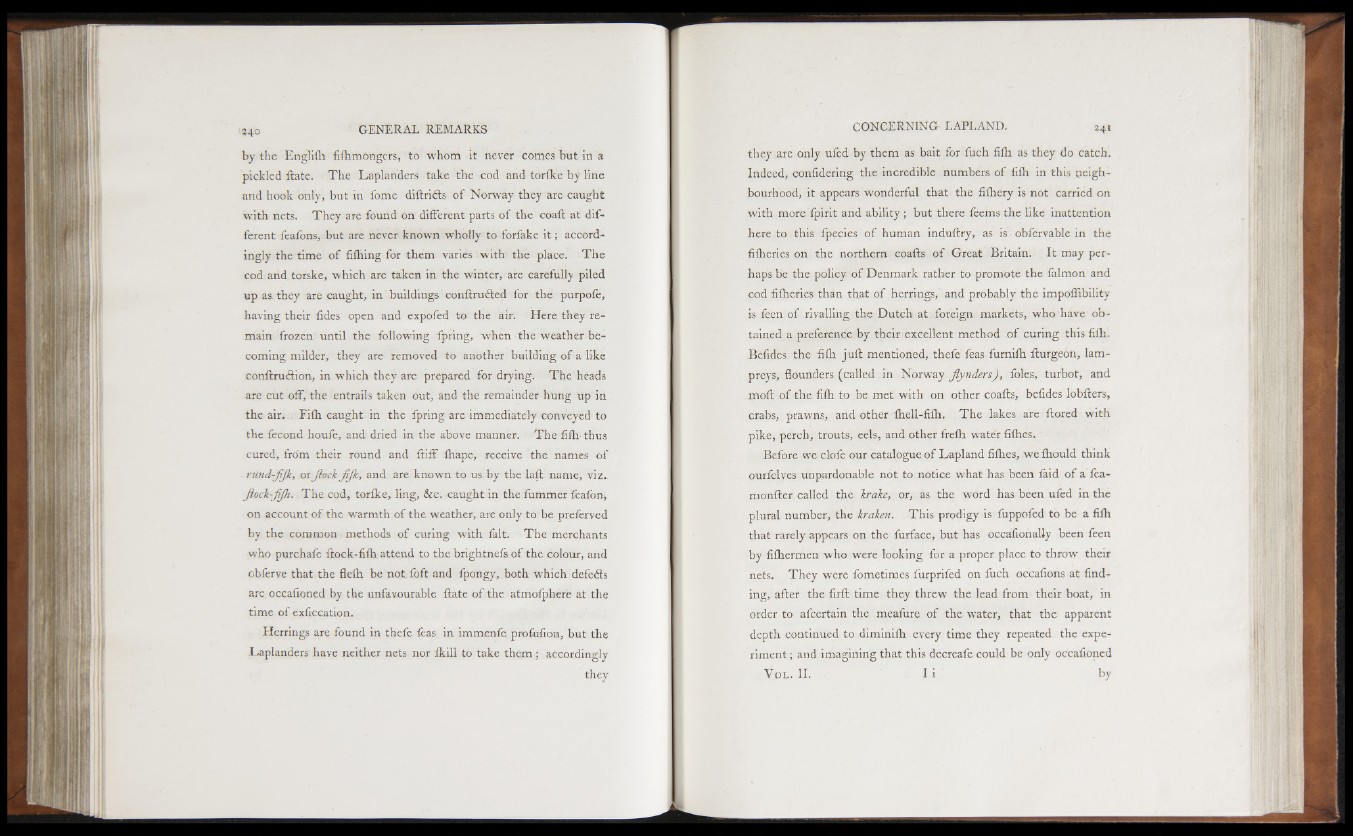
by the Engliih fiihmongers, to whom it never comes but in a
pickled ftate. The Laplanders take the cod and torlke by line
and hook only, but in fome diftri&s of Norway they are caught
with nets. They are found on different parts of the coaft at different
feaibns, but are never known wholly to forfake i t ; accordingly
the time of filhing for them varies with the place. The
cod arid torske, which are taken in the winter, are carefully piled
up as they are caught, in buildings conftrudted for the purpofe,
having their lides open and expofed to the air. Here they remain
frozen until the following Ipring, when the weather becoming
milder, they are removed to another building of a like
conftruftion, in which they are prepared for drying. The heads
are cut off, the entrails taken out, and the remainder hung up in
the air. Fiih caught m the fpring are immediately conveyed to
the fecond houfe, and dried in the above manner. The fiih thus
cured, from their round and ftiff lhape, receive the names of
rund-jifk, or Jiock Ji/k, and are known to us by the laft name, viz,
Jiock-jiJh. The cod, torfke, ling, &e. caught in the fummer feafon,
on account of the warmth of the weather, are only to be preferved
by the common methods of curing with lalt. The merchants
who purchafe ftock-fiih attend to the brightnels of the colour, and
obferve that the flefh be not loft and fpongy, both which defedts
are occafioned by the unfavourable ftate of the atmolphere at the
time of exficcation.
Herrings are found in thefe leas in immenle profufion, but the
Laplanders have neither nets nor Ikill to take th em ; accordingly
they
they are only ufed by them as bait for fuch fiih as they do catch.
Indeed, confidering the incredible numbers of fiih in this neighbourhood,
it appears wonderful that the filhery is not carried on
with more ipirit and ability; but there leems the like inattention
here to this ipecies of human induftry, as is obfervable in the
fiiheries on the northern coafts of Great Britain. I t may perhaps
be the policy of Denmark rather to promote the lalmon and
cod fiiheries than th.at of herrings, and probably the impoflibility
is feen of riyalling the Dutch at foreign markets, who have obtained
a preference by their excellent method o f curing this fiih.
Befides the fiih ju il mentioned, thefe feas furnlfh fturgeon, lampreys,
flounders (called in Norway Jlynders), loles, turbot, and
moil of the fiih to be met with on other coafts, befides lobfters,
crabs, prawns, and other-fhell-filh. The lakes are ftored with
pike, perch, trouts, eels, and other frelh water fifties.
Before we clofe our catalogue of Lapland fillies, we fliould think
ourfelves unpardonable not to notice what has been faid o f a fea-
monfter called the brake, or, as the word has been ufed in the
plural number, the kraken. This prodigy is fuppofed to be a fiih
that rarely appears on the furface, but has occafionally been feen
by filhermen who were looking for a proper place to throw their
nets. They were fometimes furprifed on fuch occafions at finding,
after the firft time they threw the lead from their boat, in
order to afcertain the meafure of the water, that the apparent
depth continued to diminilh every time they repeated the experiment
; and imagining that this decreafe could be only occafioned
V o l . II. I i by